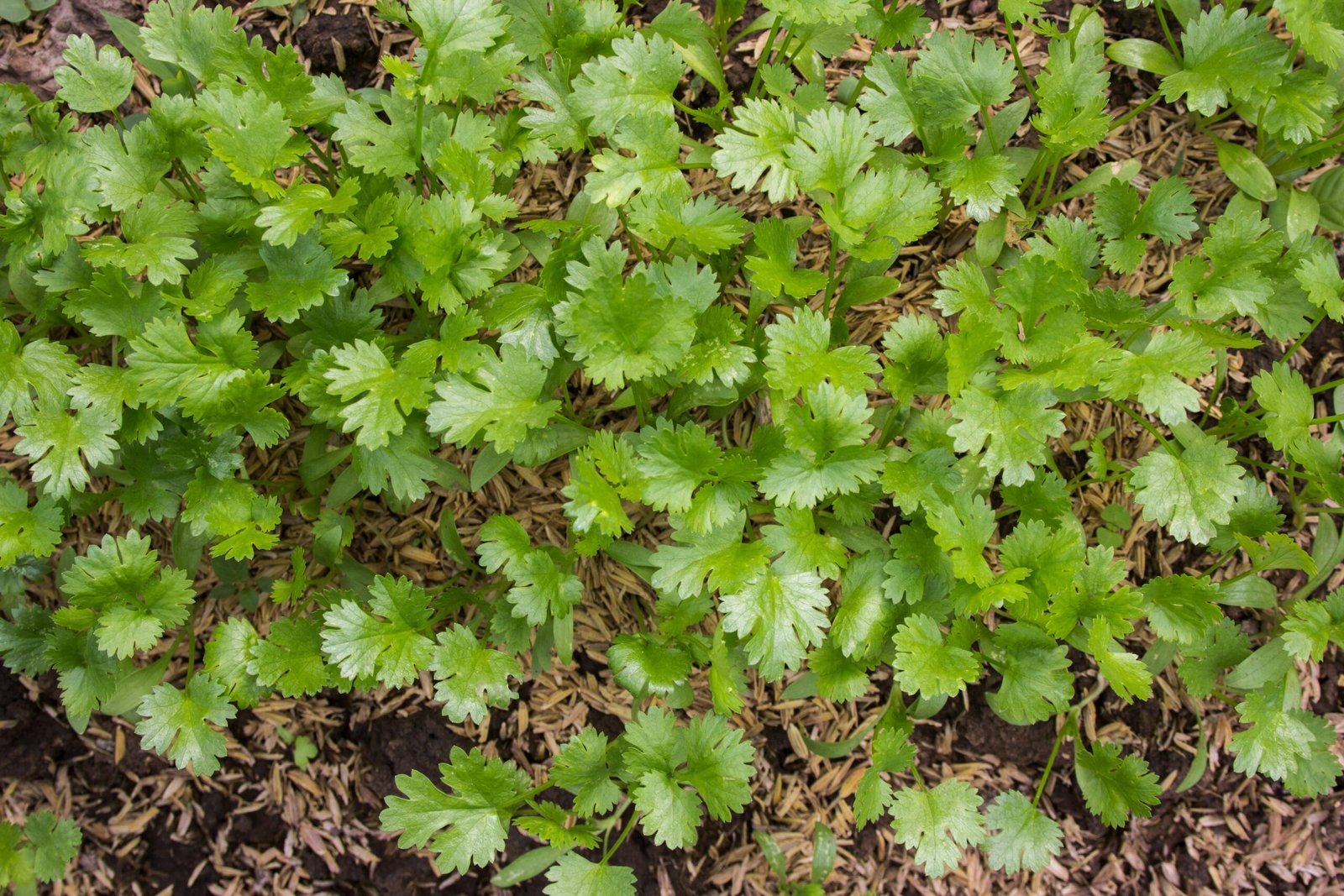Latest News
Organic Coriander Cultivation Gaining Momentum | A Profitable Spice for Indian Farmers

Growing health consciousness and consumer demand for products free of chemicals have made growing organic coriander a profitable business for Indian farmers. Widely grown for its seeds and leaves (called dhaniya), coriander is a significant export and a staple in cooking. In order to access premium markets, save input costs, and improve soil health, many growers in India are switching to organic methods these days.
🌱 Why Plant Organic Coriander?
India leads the world in coriander production, consumption, and exports. Coriander, which has historically been grown using chemical pesticides and fertilisers, is now undergoing a green shift as farmers choose organic methods for a number of strong reasons:

- Growing local and worldwide consumer demand for organic spices
- Higher market rates for coriander that has been certified organic
- Eventually, manufacturing costs decreased
- Long-term sustainability, biodiversity, and soil health improvements
- Government grants via NABARD and the Paramparagat Krishi Vikas Yojana (PKVY)
Our input costs have decreased as a result of organic farming, and consumers are now paying more. According to Rajendra Sharma, an organic spice producer from Kota, Rajasthan, “it’s a win-win situation.”
India’s Principal Coriander-Growing States
The main places to grow coriander are:
- Rajasthan is the biggest producer, particularly in the districts of Baran and Kota.
- Madhya Pradesh
- Gujarat
- The state of Tamil Nadu
- The state of Andhra Pradesh
- Uttar Pradesh
Cool winters, well-drained loamy soils, and irrigation availability make these areas perfect for growth.
🌿 Organic Coriander Farming Methods
Careful preparation and commitment to natural agricultural methods are necessary for organic coriander growing. This is a brief overview of the procedure:
✅ Preparing Soil
Make use of vermicompost, green manure, or well-rotted farmyard manure (FYM).
Keep the pH of your soil between 6.0 and 7.5.
To get a fine tilth, use thorough ploughing and then harrowing.
- 🌾 Choosing and Planting Seeds
Use untreated local cultivars such as RCr-41, RCr-436, and CO-4, or certified organic seeds. - To improve germination, split seeds before planting.
- Sow for the Rabi season in October or November.
- Make sure that rows are 30 cm apart, and plants are 10–15 cm apart.
💧 Water Management : During crucial phases (germination, blooming, seed production), use drip irrigation or controlled flooding.
Steer clear of excessive watering to avoid root rot.
🐛 Disease and Pest Management
Use cow urine sprays, neem oil, and biopesticides such as Trichoderma
- Utilise companion crops to naturally ward against pests, such as coriander and fenugreek.
- Rotate your crops to reduce the accumulation of diseases.
Prospects for the Market and Exports
There is a high demand for coriander seeds and leaves in both local spice markets and export markets such as:
- UAE
- USA
- Malaysia
- Germany
- UK
In 2024, India exported more than 48,000 tonnes of coriander seeds, with organic kinds selling for 30–40% more. Natural food firms, Ayurvedic medicine manufacturers, and health-conscious customers are particularly interested in organic coriander.
In order to create identity, trust, and higher profits for farmers, local markets and Farmer Producer Organisations (FPOs) are also taking on the task of aggregating and branding organic coriander under regional labels.
Government Programs and Assistance for Certification
A number of programs are assisting farmers in switching to organic spice production:
- Paramparagat Krishi Vikas Yojana (PKVY) for organic cluster development and group certification
- Supporting spice crops under the Mission for Integrated Development of Horticulture (MIDH)
- Export certification by APEDA (NPOP, USDA Organic)
- Spice Board of India for buyer linkages and technical advice
In order to lower certification costs and facilitate access to institutional purchasers, farmers might also establish FPOs or Self-Help Groups (SHGs).
Obstacles and the Path Ahead
Although growing coriander organically has benefits, there are drawbacks as well:
- yields that are initially lower than those of traditional farming
- Costs and difficulty of certification
- Lack of knowledge about export-grade requirements and packing
- Some areas lack direct market access.
However, e-commerce platforms, direct farm-to-market approaches, and training initiatives are progressively addressing these issues.
According to Bundelkhand woman farmer Sarita Devi, “We’re now selling organic coriander online via FPO networks—it’s a game-changer.”
🚀 Organic Coriander’s Future in India
For coriander producers that adhere to organic standards, the future seems bright. Premiums are rising, support is increasing, and demand is genuine. Organic coriander has the potential to increase rural incomes and make Indian spice production more competitive on a global scale with the correct education, certification, and market connections.
🙋♂️ Frequently Asked Questions Regarding Organic Coriander Production
1. How much organic coriander is produced on average per acre?
The normal yields of organic coriander are 300–400 kg per acre for leaf harvesting and 4–6 quintals per acre for seed.
2. How long does it take for coriander to reach maturity so that seeds may be harvested?
After being sown, coriander takes between 90 to 110 days to reach full maturity for seed production.
3. Which pests are often seen in coriander cultivation?
Common pests include powdery mildew, cutworms, and aphids. Trichoderma applications and neem-based sprays are efficient natural remedies.
4. Does selling organic coriander need certification?
Indeed, in order to name and sell your food as “organic,” particularly for export markets, certification (under NPOP or PGS-India) is necessary.
5. Is it possible to cultivate coriander as an intercrop?
Indeed. Particularly in organic systems, coriander thrives when grown as an intercrop with mustard, garlic, onion, or fenugreek.













